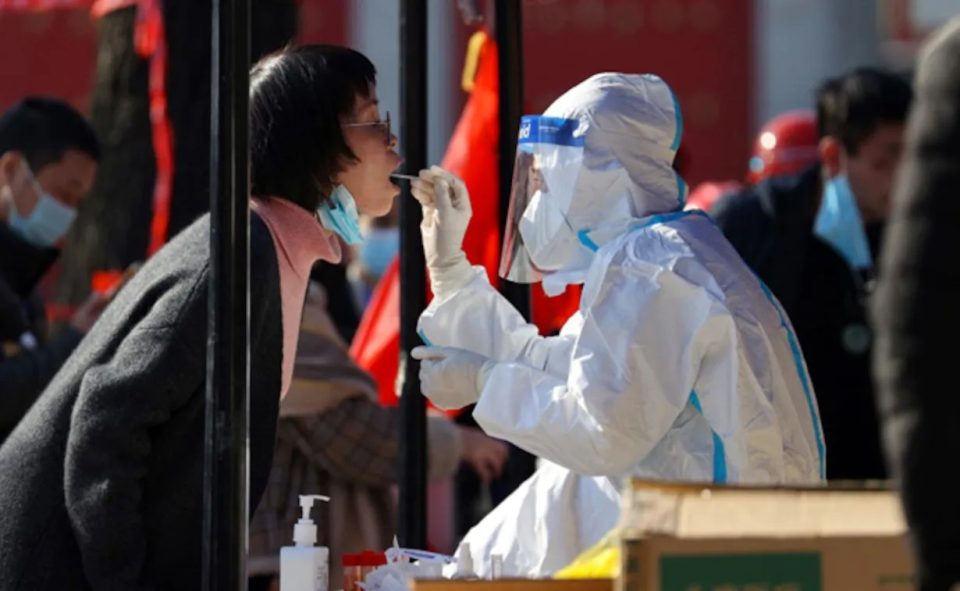
China’s zero-COVID policy wreaks havoc as cases surge and so do protests

Fresh protests against COVID restrictions have been reported from China after an apartment block fire in Urumqi killed 10 people on Thursday. Even though the authorities in Urumqi have denied that COVID restrictions prevented people from fleeing the building — as alleged by the protestors — they have now promised to phase out restrictions.
“If we must die, you die together with us! “ “End the #lockdown!”
In #Urumqi #Xinjiang, angry people surrounded the government building and demanded lifting the lockdown after being locked down for months. #covid #covid19 #CCPVirus pic.twitter.com/QwxyVul5sH— Inconvenient Truths by Jennifer Zeng 曾錚真言 (@jenniferzeng97) November 26, 2022
Despite the country’s tough zero-COVID policy, infections have been hitting new highs in China. Coronavirus cases in China have crossed 30,000 new infections in 24 hours for the first time on Thursday. The previous record was in mid-April, the South China Morning Post reported. On Friday, the National Health Commission reported another record high for the third consecutive day — 35,183.
Japan, Brazil, South Korea, France, and Germany are currently reporting high daily numbers. But none has adopted a restrictive containment policy like China. While most countries have tried to ensure that normal activities continue alongside trying to contain the number of cases, China has pursued a zero-COVID strategy from the beginning.
China’s zero-COVID strategy
The authorities hospitalized every known case, even asymptomatic, without fail. Even small outbreaks prompted severe lockdowns. All suspected cases and all contacts faced prolonged isolated. Shanghai, with a population of more than 25 million, was locked down in March. In Urumqi, the capital of Western Xinjiang region, restrictions have been in place since early August.
In fact, China had just started relaxing the restrictions when the current surge in the number of cases was recorded. The quarantine time was reduced to five days. Besides, only close contacts of an infected person were being quarantined.
Also read: China reports first COVID death in six months; curbs in place
After the rise in cases, Zhengzhou, capital of Henan province, imposed a five-day lockdown on Friday. The city houses the world’s biggest iPhone plant, from where clashes were reported between workers and security personnel after it was closed for weeks.
Now, local officials have been asked to take more targeted and scientific measures while implementing restrictions. However, Chinese officials have said they will not ease the guidelines under the zero-COVID plan.
How good is a zero-COVID policy?
Initially, China’s strategy was successful. When China reported its previous daily high in April, that was the first time it had recorded even 1,000 cases a day.
However, despite its success, China’s tough zero-COVID policy may be a weakness. Most of China’s massive population has not been infected yet, and hence, has no immunity. Vaccines do not prevent infections very significantly. Therefore, a highly contagious variant like Omicron is wreaking havoc by breaching the mighty zero-COVID barrier.
Hong Kong and South Korea faced the same issue in February. Hong Kong had also adopted a zero-COVID policy, and South Korea tested aggressively to detect cases early. But when Omicron struck, both countries recorded thousands of cases and deaths. South Korea is once again recording a high number of cases.
Also read: Why Bappi Lahiri’s ‘Jimmy Jimmy’ is anthem to protest COVID lockdown in China
Omicron is not as severe as Delta or Beta, but it can still be deadly for the elderly. China’s vaccine penetration among the 80-plus population has been low. Only 66% of people in that age group have been vaccinated. Of them, only 40% have taken a booster dose. In addition, the effectiveness of the two Chinese vaccines, Sinovac and Sinopharm, has been questioned.
With such stringent lockdowns, China’s economy has been predicted to shrink by 0.3% in the fourth quarter from the third. Since China exports around a third of the world’s intermediate goods, a disruption in China’s manufacturing industry will likely hit the global economy.
(With agency inputs)


